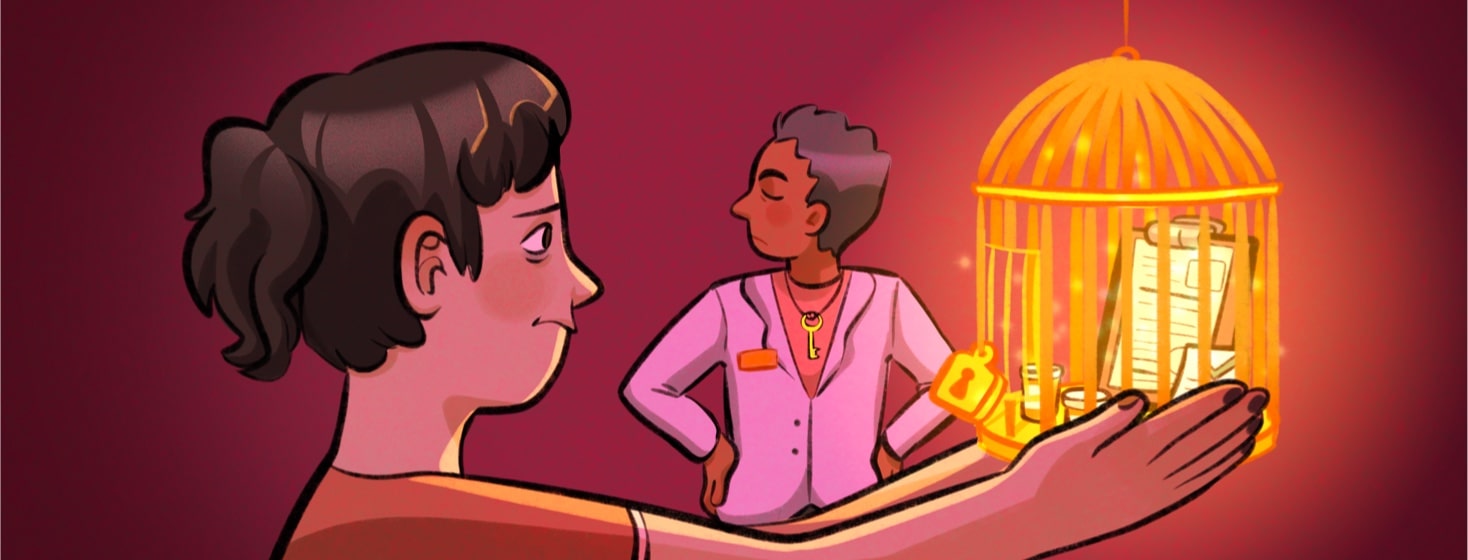Tips for Getting an Endometriosis Diagnosis
If you start the clock after my first visit with a gynecologist, it took about seven years for me to get my endometriosis diagnosis. While the word "journey" gets overused these days, it's the perfect word to describe my experience.
Early signs and symptoms of endometriosis: my experience as a teenager
My endometriosis signs and symptoms started early on. When I was only 13, my period pain would cause my vision to blur.
Sometimes I'd throw up. I lost count of how many times someone pointed out that I'd bled through my pad and onto my pants.
Before I left middle school, I saw multiple doctors about chronic backaches and a possible brain tumor, which I now know was menstrual migraine. Other symptoms, like a stabbing pain in my lower right pelvis, landed me in the emergency room.
I went to the hospital in high school because my side hurt so bad I couldn't walk. But I didn't have a fever and wasn't throwing up then, so the nurse ruled out appendicitis and sent me home.
It's just ovulation, she told me.
My pelvic pain worsened after that trip to the hospital, so my mother took me to a gynecologist. But I grew up in a small Georgia town, and my doctor didn't want to give me a proper vaginal exam since I wasn't sexually active yet.
Instead, she gave me no answers, just birth control pills that only worsened my cramps.
My struggle with misdiagnosis and the search for answers
Not long after the appendicitis scare, I developed diarrhea and constipation that would come and go. Sometimes I'd get heartburn and throw up out of nowhere.
Food made me bloated. What will come as a surprise to no one with endo, I developed depression and anxiety.
Before I was old enough to vote, a gastroenterologist diagnosed me with irritable bowel syndrome, and a psychiatrist added major depressive disorder to the list. Treatment included anti-spasmodic pills to help my intestines and antidepressants for my mood.
I saw several OB-GYNs about my debilitating cramps throughout college. None seemed to raise any red flags when I cried during pelvic exams or told them I still vomited from the pain of my period.
Each one prescribed a different type of hormonal birth control, but none helped.
Before I graduated from university, I mentioned the possibility of endometriosis to a nurse. I came across endo in a novel.
But she warned that an official diagnosis might harm might chances of future health care. There weren't any laws protecting coverage for pre-existing conditions back then, and I wouldn't be on my mom's coverage for very much longer.
My journey to a diagnosis and treatment
I left college knowing I probably had endometriosis, but I hadn't yet had a doctor who wanted to look for it.
Luckily, a year after I started my first newspaper job, I met someone who'd recently had surgery for endometriosis. She recognized the signs of endo immediately when I complained of period pain and pain with sex.
She told me she loved her OB-GYN and suggested I should make an appointment right away. This new doc scheduled me for a laparoscopy after a single visit.
During my first surgery, my doctor removed a large chunk of scar tissue over my appendix. He also burned off endometriomas and several endo lesions.
This wouldn't cure my endo or be my last surgery, but it set me on the path toward getting the right treatment. And it was a relief to finally have a name for what I was experiencing.
How to advocate for yourself with doctors
You wouldn't have to consult how-to lists to get the right diagnosis in a perfect world. It should be the doctor's job to know what's causing your symptoms.
My top tips for how to get an endometriosis diagnosis are:
- See a specialistYou'll want to see a surgeon who treats a lot of people with endometriosis. In my experience, this tends to be OB-GYNs with a connection to an academic institution or fertility center or who are trained in minimally invasive gynecologic surgery (MIGS). Some doctors may list laparoscopy or MIGS as a specialty on their bio.
- Describe how your symptoms affect your lifeMy complaints of backaches and period pain mostly fell on deaf ears. Instead, doctors seemed more concerned when I told them that I physically couldn't have sex and that my period pain was so disabling it kept me from work, exercise, and other everyday things.
- Be specific about your painYou can have endometriosis without pain. But endo can cause pain that's different than regular period cramps. For instance, I get a burning and stabbing pain that can make it hard to walk. I also get leg and hip pain that's cyclical.
- Get a second opinionI know it's a pain to shop around for doctors, but finding the right surgeon has been a key part of my treatment. How do you an endometriosis specialist? You can start by asking your primary care doctor for a referral. Your fellow endo warriors may also have tips.
If you have advice on how to get an endometriosis diagnosis, let us know in the comments. We'd love to hear your success stories!

Join the conversation